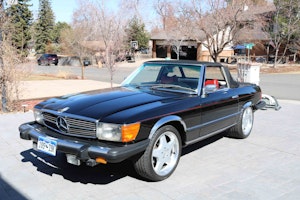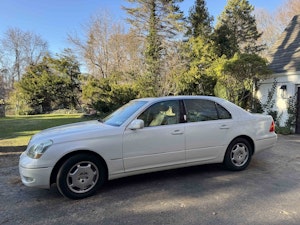Media | Articles
Cheats, mud, and metal: The 1961–68 (and ’71) Trans-Canada Rally
“It was sport. You didn’t get all mad just because you’d done something stupid. It’s probably a young person’s thing.” — Don McQuirk
Brothers Don and Colin McQuirk were young men in 1963 when they decided to enter a 1951 Bentley Mark VI in a race across Canada known as the Shell 4000 Rally. Don, now 86, says not everyone was happy about it, however.
“Rolls-Royce was not particularly enthused,” he says of the legendary British luxury car builder, which owned Bentley at the time. It’s easy to see why. The journey was grueling, and it pushed man and machine to the brink.
The press called the Trans-Canada Rally the longest rally in the world, and it followed a winding 4000-mile route, between Vancouver and Montreal. The event was first held in April 1961 under the auspicious title of the British Columbia International Trade Fair Car Rally, and the following year, Shell became title sponsor. The rally was officially sanctioned by the FIA, and according to a report in the August 1963 issue of Car Life magazine, it was one of the five international rallies that counted toward a World Rally Championship.
Marketplace
Buy and sell classics with confidence
20180621125917)
For the 1963 race, Don and Colin McQuirk drove the Bentley, which Don still owns, from Thornhill, Ontario, to Vancouver for the start of the rally. Taking turns driving and sleeping, the brothers took about 48 hours to get there. The Bentley already had 358,000 miles on it when they arrived at the start line.
Racing royalty, and the opposite of that
Notable Trans-Canada Rally entrants through the years included Paddy Hopkirk, who drove a factory Mini; Luigi Chinetti, a Le Mans winner, founder of the N.A.R.T. team, and the man who brought Ferrari to America; and Formula 1 great Pedro Rodriguez, who raced for Ferrari, Lotus, and Cooper.
Less famous but still notable entrants in 1963 included a privateer team called “Ecurie Escargot” (which means Snail Stables in French) and, according to the August 1963 issue of Canadian Track & Traffic magazine, “the husband/wife team of Myrna and Bill Williams of Vancouver, who brought their miniature poodle, Tinkerbell (smartly attired in an original Shell coat).”
20180621125949)
“We were always dressed in shirts and ties and jackets like we were going to work or something,” Don says. “That caused some amusement, seeing us two among a room full of people in coveralls. I never thought anything about that sort of thing; it was just something you did.”
The 350,000-mile Bentley
The Bentley MK6 had a six-cylinder, 4.25-liter “F-Head” engine with overhead inlet valves and side exhaust valves. When Don found the car for sale, the engine was blown. “I bought the thing and fixed the engine up, which wasn’t so hard for me. I paid around about $3000.”
McQuirk says he learned how to fix things through trial and error. “When I was a kid I used to take my bicycle apart. I’m just interested in how things work. When I bought my first car, a Vauxhall, it needed engine work, so I learned.”
20180621130022)
Among the competitors in the ’63 field were factory teams from Ford, Chrysler, Renault, Volvo, and Studebaker. One year, Ford sent a company plane to follow the rally route, carrying spare engines for its team cars. Others also had mechanics and spare parts at the ready.
As for the McQuirk brothers, only the brakes gave them trouble, which was a bit unnerving for the poor drivers, especially considering the less-than-favorable conditions.
According to Marcel Chichak, unofficial historian of the Shell 4000, “In 1961, there was no Trans-Canada highway [it wasn’t completed until 1971]. There was no Coquihalla Highway. When they went from coast to coast, they went on backroads and unpaved roads. In Canada in springtime, that meant sucking mud and, in some cases, snow.”
Special stages in the 1963 Trans-Canada Rally included a training ground for military tanks, trails though a national park, and laps of Mosport Park, which Don McQuirk says he did while smoking his pipe.
Cheats, both big and small
Some years, half the rally cars would get stuck in impassable mud, but that wasn’t a problem for the McQuirks’ big Bentley, which was well suited to blasting across long, straight stretches of rough Prairie roads at high speed.
20180621130208)
Disaster struck early, however. While in the Rocky Mountains, the McQuirks came upon a landslide in one of the mountain passes. Boulders were strewn across the road, and loose rock smashed the Bentley’s oil pan, gearbox, and some brake rods (“On that car, the rear brakes were mechanical,” Don says).
Luckily, Shell had given each team 12 cans of oil. “We’d pour one can in and keep going until it dropped again, and then pour another,” Don remembers. Eventually the oil ran out, and all seemed lost until a reporter stopped and asked what had happened.
Although outside assistance of any kind was against the rules, “he pointed out that there’d be a case of oil around the next bend.” And sure enough, it wasn’t long before the brothers came upon a case of oil, freshly planted by the reporter. The two patched up the holes at a gas station and then continued on the route. “We wrapped a towel or something around the gearbox hole and tied it with rope,” Don says. “We didn’t have any troubles after that.”
A story about the rally in the May 10, 1963 issue of Autosport magazine mentioned, “The 1951 Bentley of the McQuirk brothers was running with its transmission wrapped in gauze bandages whilst the navigator poured oil from a soft drink bottle through a hole in the floor!” Canadian Track & Traffic, which included a photo of the Bentley, said “the oil flowed like wine.”
Truth be told, the organizers generally turned a blind eye to minor cheating. All the privateers helped each other. The factory teams got away with far worse because the sponsors wanted to keep the high-profile entrants happy, McQuirk explains.
“Well, of course everybody cheated,” he says. He remembers a badly bent Ford Cortina whizzing past the Bentley and veering off the road. At the next checkpoint, the same car reappeared in mint condition.
20180621130242)
“Almost like a picnic”
The brothers finished 26th of 42 finishers, winning the Sportsman Award. Thousands of people turned out to see the competitors cross the finish line in Montreal, “lining the roads like the crowds at the Mille Miglia,” according to Canadian Track & Traffic.
“By the time we got to Montreal, Rolls-Royce was falling all over it because we got so much paper,” McQuirk says. “Just about every day there was write-up about how we were doing. Rolls-Royce was asking if there was anything we needed. It didn’t make a heck of a lot of difference to us; we’ve always been a bit independent.”
The McQuirks returned to compete in later years, first racing the Bentley again, then a Ford Anglia and Ford Cortina. Neither of the Fords finished.
When the rally organizers demanded the cars have roll cages, Don McQuirk quit. “I wasn’t about to drill holes all over the place,” he says, and began driving the Bentley on his daily commute to his job as an electro-mechanical engineer.
20180621130259)
After eight consecutive races from 1961–68, the last real Trans-Canada Rally was in 1971; a few intrepid enthusiasts put together three “retro” rallies in the 1990s.
Don McQuirk cherishes all the road time he spent with his brother, even though he says Colin would always get sick 10 minutes in, puke, and then insist that he needed to drive, so Don would get stuck being the navigator.
“We probably never spent more than $300. It wasn’t a heck of a lot of money,” Don says. “It was easy. It was a pleasant day out, almost like a picnic.”
Sure, Don. We’ve seen the pictures. The Trans-Canada Rally was a piece of cake.
***
Special thanks to Marcel Chichak, who is soliciting photographs and information from anyone who participated in the 1961–71 Trans-Canada Rally so that he can continue to expand the event’s historical website.
20180621125730)









